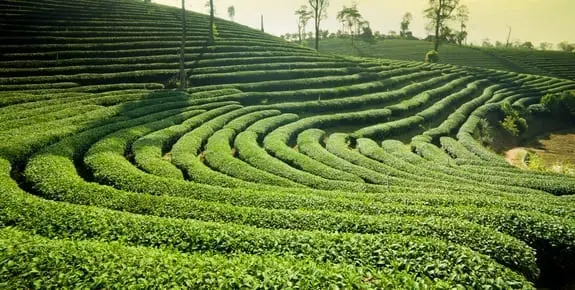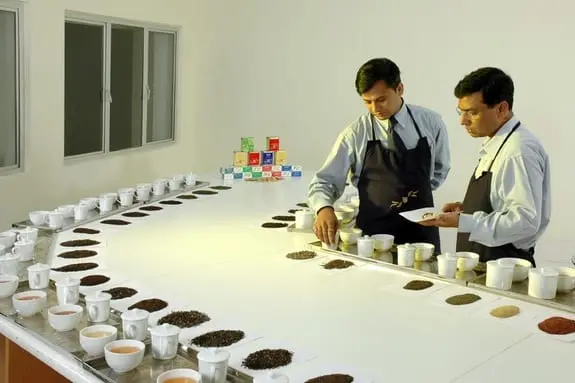Today, it is hard to imagine that tea was once the exclusive privilege of kings and emperors. However, a really good tea is still not cheap today. The rest is just a compromise.
 The history of such a seemingly simple and familiar drink has more than 5 thousand years. China, India, the Himalayas and Tibet are still fighting for the right to be called his homeland. According to one legend, the Chinese emperor Shen Nung, during his journey through the country, stopped in the mountains to rest, a few leaves from a tea bush fell into a pot of boiling water and colored the water. The emperor, who was fond of studying medicinal plants, could not help but be interested in this phenomenon and tried the drink, discovering its delicate taste and invigorating effect.
The history of such a seemingly simple and familiar drink has more than 5 thousand years. China, India, the Himalayas and Tibet are still fighting for the right to be called his homeland. According to one legend, the Chinese emperor Shen Nung, during his journey through the country, stopped in the mountains to rest, a few leaves from a tea bush fell into a pot of boiling water and colored the water. The emperor, who was fond of studying medicinal plants, could not help but be interested in this phenomenon and tried the drink, discovering its delicate taste and invigorating effect.
Since then, it has been a long time since people learned how to make tea. At first, it was used as a spice, added to salt water for cooking rice and vegetables. Tea was infused only in the 14th century, and almost two centuries later, tea began its journey around the world.
It was brought to Europe by Portuguese traders in the 16th century as a gift to their king, but it was not until the 17th century that the Europeans really tasted tea, thanks to Dutch suppliers. Towards the end of the 17th century, tea came to England as a gift from the merchants of the East India Company for the wedding of the British King Charles II and the Portuguese Princess Catarina Braganza, who opened the culture of tea drinking to the British. In the 18th century, the first tea houses began to open in Albion, and in the 19th century, the British were the first to mix blends, creating the signature “English Breakfast”. At the same time, thanks to the Duchess of Bedford, the tradition of afternoon tea came into fashion.
In Russia, tea came in the 17th century, as in all of Europe at first, it was extremely expensive, but by the end of the 19th century, when the demand for the drink significantly outstripped the supply around the world, prices, as well as the quality of tea, fell significantly. With the advent of samovars, tea gatherings and the culture of drinking tea with lemon and honey became a Russian tradition. The British also liked to mix tea with milk, in India the drink was brewed with the addition of various spices, and the Americans discovered its refreshing properties, creating the famous Ice Tea.
With the invention of the tea bag in 1908, tea finally entered the masses, losing the quality and culture of tea drinking. After all, the best varieties of tea make up less than 1 % of the total annual harvest, 2-3 % – tea of a good level, everything else is classified as”the category of grade suitable for commercial use”.
 Cultural revival
Cultural revival
Newby is one of the few tea companies that is engaged not just in the production and sale of tea, but primarily in the preservation and revival of tea culture. For the head of the company, Nirmal Sethiya, tea is an object of special love, which he carried through his whole life. Mr. Sethiya is a successful entrepreneur, and the tea business is more of an outlet for him, a way to pass on his knowledge to people and teach them to appreciate the drink that he has idolized all his life.
Having started his career at the age of 13 as a t-teister, in 2000 he created the Newby company to produce truly high-quality tea. His company is one of the few in the world that has its own factory for storing and packaging tea. It always maintains a constant temperature and  humidity, and each variety is stored separately so that the flavors do not mix all this to get the highest quality tea.
humidity, and each variety is stored separately so that the flavors do not mix all this to get the highest quality tea.
In memory of his wife, who inspired him to create the company, he decided to collect a collection of tea utensils “The Chitra Collection”, which has already become the largest private collection of items related to tea culture. It features more than 850 exhibits, including rare tea sets from the Chinese Song Dynasty of the X century to the era of Queen Victoria in the UK, a unique Faberge tea box and unusual sets by Russian masters Pavel Ovchinnikov and Ivan Khlebnikov.









